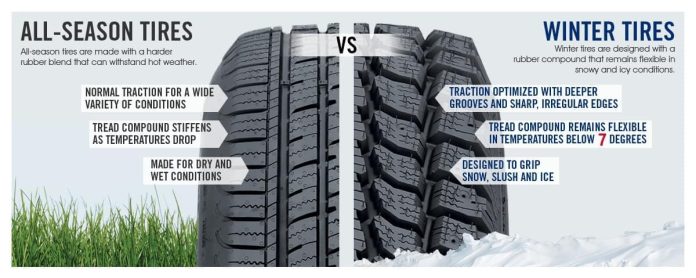The East Algoma Ontario Provincial Police (OPP) want to ensure drivers stay safe during the upcoming snowy season while traveling on the roads. A key part of road safety is making sure your vehicle has proper road surface traction in the winter.
All-season tires don’t work the same on snow, ice or cold pavement. The stopping distance of a car with winter tires can be 30 to 40 per cent shorter than one with all-season tires. The most important part of a winter tire is actually its rubber compound. This is designed to stay soft in freezing temperatures, and very effective for 7 degrees Celsius and below. The tread compound used in all-season tires offers little cold weather traction and becomes hard, losing pliability and traction in freezing temperatures. Winter (snow) tires, however, are designed to help deliver safety and control in snow, slush, rain, ice and cold weather.
All-wheel drive (AWD) vehicles help you accelerate, but not stop. On slippery surfaces, vehicles with four-wheel drive or AWD can accelerate better than those with two-wheel drive. However, when stopping or turning, the limits are determined by the traction capabilities of your tires, not the number of driven wheels. You should still adjust your driving to the conditions you are facing, even if you’re operating an AWD vehicle.
The number one cause of motor vehicle collisions during snowy conditions is speed. Driver’s going too fast for road and weather conditions. Remember – ice and snow – keep it slow!








